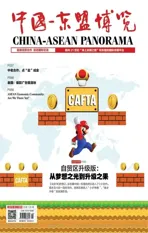ASEAN Economic Community: Are We There Yet?
2016-02-01writtenbyPoppyWinanti
written by Poppy S. Winanti
ASEAN Economic Community: Are We There Yet?
written byPoppy S. Winanti
The ASEAN Economic Community (AEC) was offi cially launched on the very last day of 2015 but many people, especially in Indonesia, will argue there will be no signifi cant changes to their daily life.
This, indeed, might be true. After all, commitments to creating a free flow of goods, services, investment and capital have already been in place since 2002 through ASEAN’s effort to establish the ASEAN Free Trade Area (AFTA).
Between 1993 and 2002, gradually, ASEAN members have applied a tariff rate of 0-5 percent for most goods originating from within ASEAN, even though different mechanisms apply for more recent members of ASEAN, countries known as CMLV (Cambodia, Myanmar, Laos and Vietnam).
Furthermore, there have been many agreements on various aspects of the free-trade area and the process of the AEC. Yet, the implementation of those commitments and agreements is still in question.
In this regard, there are at least two measures that can be used to assess whether ASEAN has achieved its single market and production base objectives: fi rst, the elimination of trade barriers both in terms of tariff reduction and non-tariff barriers; and second, a high degree of interdependency among the ASEAN member states in terms of their trade relations, which can be seen from comparing intra- and extra-ASEAN trade relations.
The higher of the degree of intra-ASEAN trade relations, the higher the degree of interdependency among ASEAN member countries, which also means a higher possibility of integration.
According to the AEC Chartbook 2014, since 2003, the original members of ASEAN, known as ASEAN-6, have made rapid progress in reducing tariff rates to zero for over 50 percent of the agreed commodity list.
This is also in line with the McKinsey Global Institute Report 2014, which found that the achievement of ASEAN countries in reducing tariff to be quite impressive.
There have been no crucial changes in trade relations among ASEAN members.
Nevertheless, hindering factors are still widely prevalent, particularly on non-tariff measures. These include different standards and regulations that impede the free flows of goods, services, investment and capital, as well as skilled labor.
In addition to that, there are many other nontariff measures, including administrative charges, certificates of approval, import licensing, quantitycontrol measures, internal taxes and other prohibition measures.
With regard to interdependency among ASEAN member states in terms of their trade relations, most ASEAN members’ external economic relations are still highly characterised by extra-regional oriented trade policy. Intra-ASEAN trade in goods, for example, has remained relatively unchanged at around 25 percent.
Thus, ASEAN members trade more with non-ASEAN members than with fellow ASEAN members, with China being the main leading trade partner for most ASEAN members.
Despite the fact that the commitment to establishing a free fl ow of goods, services, investment and capital as part of efforts to establish a single market and production base has been in place for more than two decades, there have been no crucial changes in trade relations among ASEAN members. Highly protectionist domestic policies for some sectors, especially in services and the enactment of non-tariff barriers, including behind the border regulations, are among the reasons behind a poor performance by ASEAN in achieving its AEC objectives.
Similarly, the implementation of mutual recognition arrangements on the free flow of skilled labor has also encountered obstacles due to stern domestic regulations.
Furthermore, lack of transparency without strong institutional support under the ASEAN secretariat general in Jakarta worsens the pessimistic outlook surrounding the creation of the AEC.
This has been further worsened by the lack of mechanism for enforcing sanctions, or even applying peer pressure to members that do not comply with the commitments.
Unsurprisingly there remains serious doubt regarding ASEAN’s achievement of its objectives. Right up to the time of its official launching on Dec. 31, 2015, there had been a tacit view that ASEAN had not yet reached its intended objective of creating a single market and production base, let alone attained other similarly crucial pillars, including the establishment of a highly competitive economic region with equitable economic development that is fully integrated into the global economy.
These aims are still far from a reality. Thus, it should be admitted that we are not really there yet.
To conclude, in order to create tangible regional integration in ASEAN, there must be a unifi ed ASEAN. There must be strong political will from members. In this context, the members should no longer postpone thinking about how to change the game from a loose cooperation of governments to having a central entity, which will play crucial role in shaping ASEAN’s course.
This, however, does not necessarily mean creating a supra-national institution, which would be against the nature of ASEAN members, but it does mean a more decisive role for the ASEAN secretariat in governing the process of regional integration.
Moreover, there should be a common understanding not only among ASEAN leaders but also members of society that ASEAN as a single entity will be more meaningful and have more bargaining power and more competitiveness in the global economy than ASEAN members could achieve individually.
Otherwise, ASEAN will waste its potential and remain a mere symbolic organization rather than a truly integrated region.
Resource: www.thejakartapost.com
The writer heads the Department of International Relations in the School of Social and Political Studies at Gadjah Mada University, Yogyakarta.
